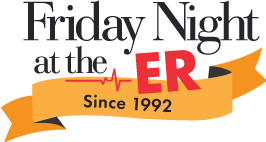If you’re planning a team offsite or management retreat to focus on strategic or business planning, you’re not only borrowing from current productivity levels by removing people from their daily work, you’re investing in the future of the organization. To maximize your investment and lay the groundwork for the most productive meeting, consider using Friday Night at the ER to kick off your session. It can serve as a useful backdrop to enhance your group’s understanding of the concepts of whole-system planning, and it’s an entertaining way to break the ice.
Here are just a few of the ways a Friday Night at the ER game program can support strategic planning.
- It can help you define the system in which your group can plan. You, or our expert facilitator if you hire us to lead the session, can ask participants to make an analogy between the boundaries of the game (the hospital departments, the hospital, the community) and their own planning boundaries. What is the system within which the planning group functions? Their organization? Their community? A geographic market?
- It can daylight real and perceived rules that will impact your plan. The rules of the game can be likened to the regulatory environment or population trends and characteristics. You can ask participants to list real planning constraints or rules (such as laws, competitor activity, and population growth statistics) as distinguished from perceived constraints (such as organizational practice norms, a historic performance problem, budget guidelines, perceptions of image). Just as in the game, it may be best to “break” certain perceived rules. You can ask a planning group to consider which of their own constraints are negotiable. Could they justify a budget change? Alter certain norms of practice? Reach across organizational boundaries? Bring about a regulatory change?
- It can foster high-level collaboration by illustrating its benefits. The game experience teaches that individual departments working toward their own separate objectives are not as effective as collaborative efforts involving the entire system. In a planning effort, it can be useful to highlight this point to ask if all the necessary stakeholders are represented at the planning table, and then to establish plans for a cross functional approach to management.
- It can encourage the use of data in critical decision-making. More data are available to Friday Night at the ER participants than they typically ask for. A strategy group can be asked to identify and assess their existing data sources. What data would they wish for if they could have anything they wanted? Can they create a dashboard of indicators to measure performance in key areas? How will work units become knowledgeable about tracking organizational performance and understanding their contribution to it?
- It can uncover whether structure is an impediment for your group. The game experience leads to an understanding of the powerful influence of “structure” in an organization. Are there structural barriers that inhibit the performance we want to achieve? How will we assess and redesign key elements of structure?
Finally, because the game is a unique and engaging experience that will be shared by everyone in your group, it creates a common language that each person can use to discuss the challenges and opportunities at hand, which can streamline communication during the planning session itself. This can be enormously beneficial for all groups, but especially when people from diverse teams or locations are meeting together.


